5 Best Stretches To Relieve Sciatica Pain Under 5 Minutes
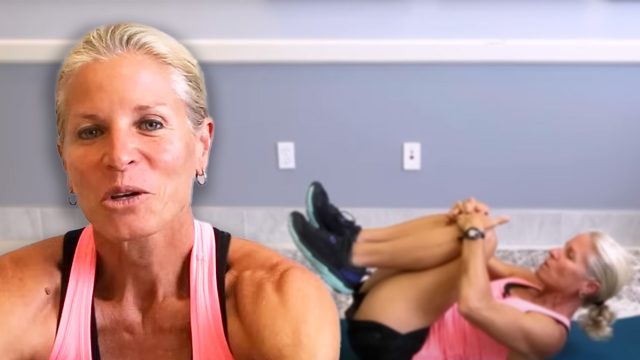
Living with sciatica pain can make even the simplest daily activities feel challenging. Whether you're struggling to get out of bed or sitting for long hours at work, that nagging discomfort in your lower back and legs can significantly impact your quality of life. The good news? Relief might be just five minutes away.
Meet Kimberly "Coach Kim" Baran Thomas, CPT, a certified personal trainer with over three decades of experience helping people move better and feel stronger. Based in Naples, Florida, Kim has developed a simple yet powerful sequence of stretches specifically designed to target sciatica pain and improve mobility. "Motion is lotion," as Coach Kim likes to say, and these exercises prove just that. Follow along with these expert-approved stretches to start feeling better today.
Preparation: Setting Up for Success
Before beginning, Coach Kim underlines the importance of checking with your physician before starting any exercise program. Find a comfortable yoga mat or firm surface, and remember that consistency is key. "You can do these stretches once or twice daily, performing three to five repetitions on each side," Coach Kim suggests in her post.
Single Knee Hug with Ankle Rotations
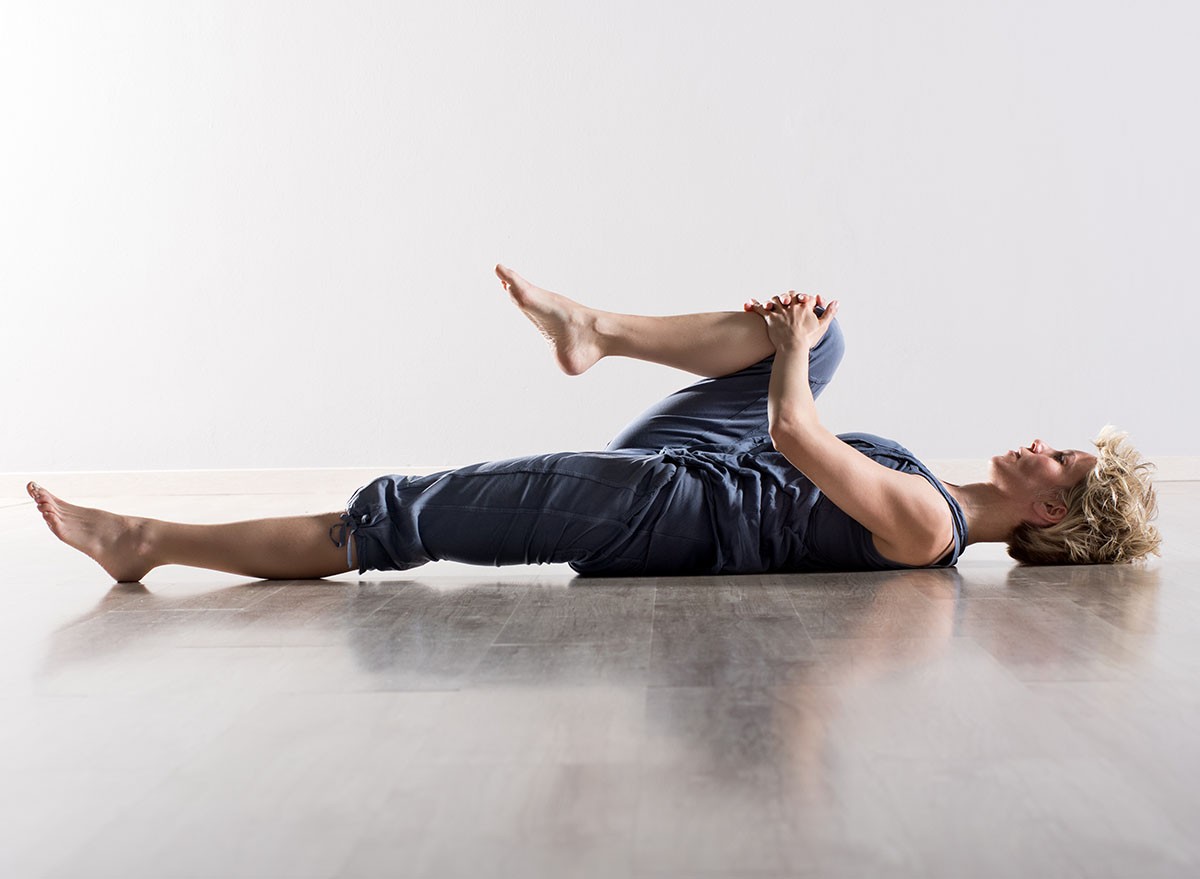
Start by lying on your back with one leg extended. "If your lower back is particularly sensitive, keep the extended leg bent," advises Coach Kim. Pull one knee toward your chest while rotating your ankle in both directions. This gentle movement improves ankle mobility and promotes blood flow. Switch sides and repeat. As Coach Kim notes, "Every cell in your body will thank you for this stretch."
RELATED: This Is Exactly How to Lose Body Fat This Year
Cross-Body Knee Pull
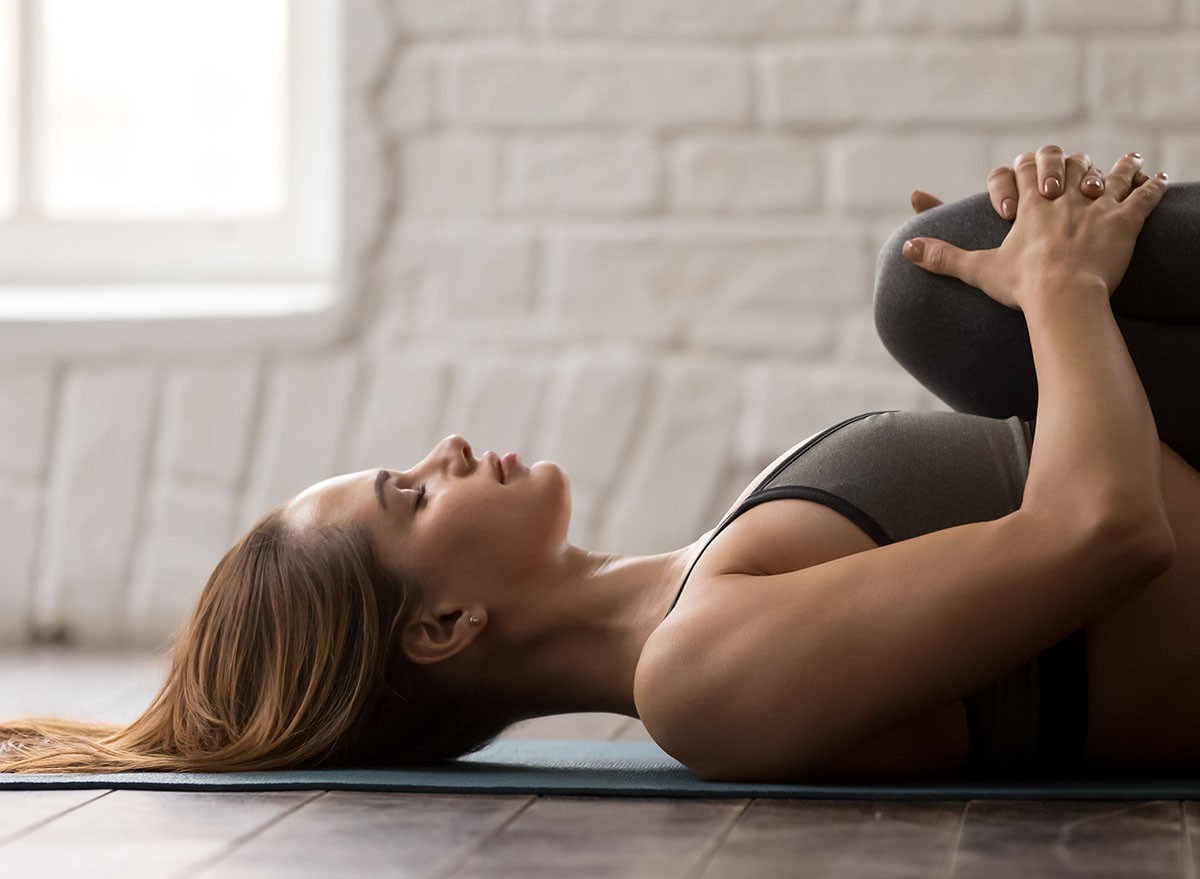
For this stretch, lie on your back with one leg straight. Using your opposite hand, gently pull your bent knee across your body while looking in the opposite direction. "For enhanced relief from sciatica, pull the knee up more diagonally towards your chest," Coach Kim suggests. Hold for 2-5 seconds on each side. This movement targets your glutes and hamstrings, areas often associated with sciatic pain.
Gentle Knee Drops
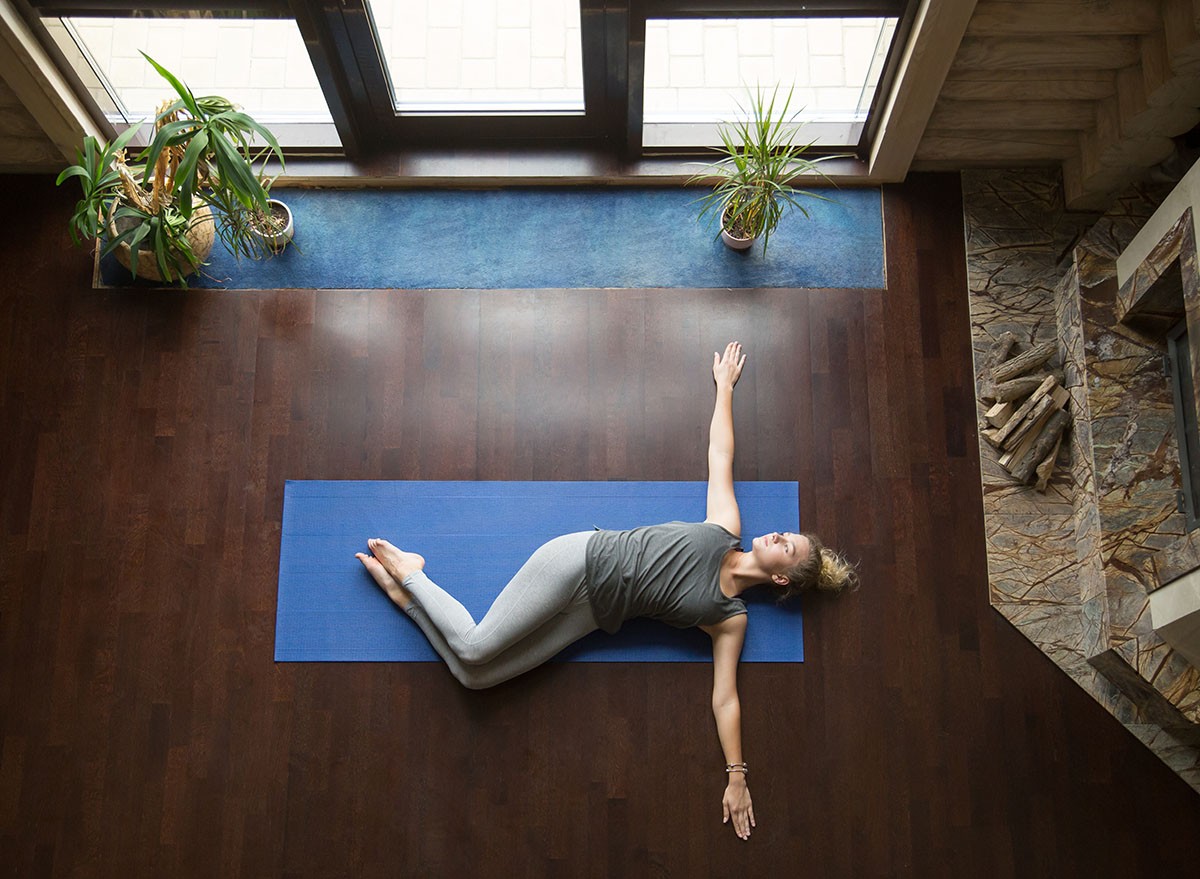
Position yourself with feet together and knees touching, arms at your sides with palms down. Coach Kim emphasizes the importance of control here: "It's a drop, not a flop." Gently lower your knees to one side, then the other. This movement helps release tension in your lower back while maintaining proper alignment.
Double Knee Hug
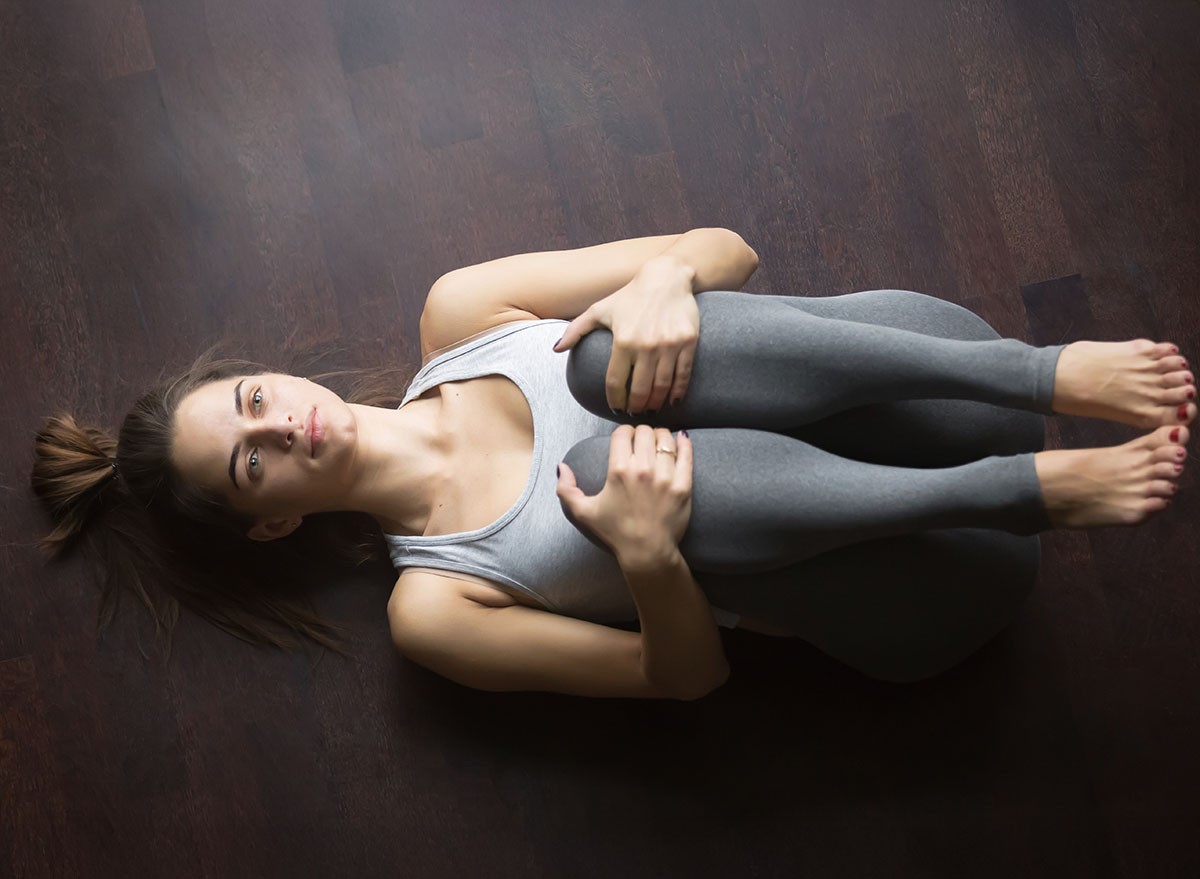
Bring both knees toward your chest, interlocking your fingers around them. "If you have neck issues, keep your head down," Coach Kim advises. Otherwise, you can gently lift your head. Hold this position for a count of three, release, and repeat. This stretch is particularly beneficial for those with spinal stenosis.
Wide-Legged Knee Drops
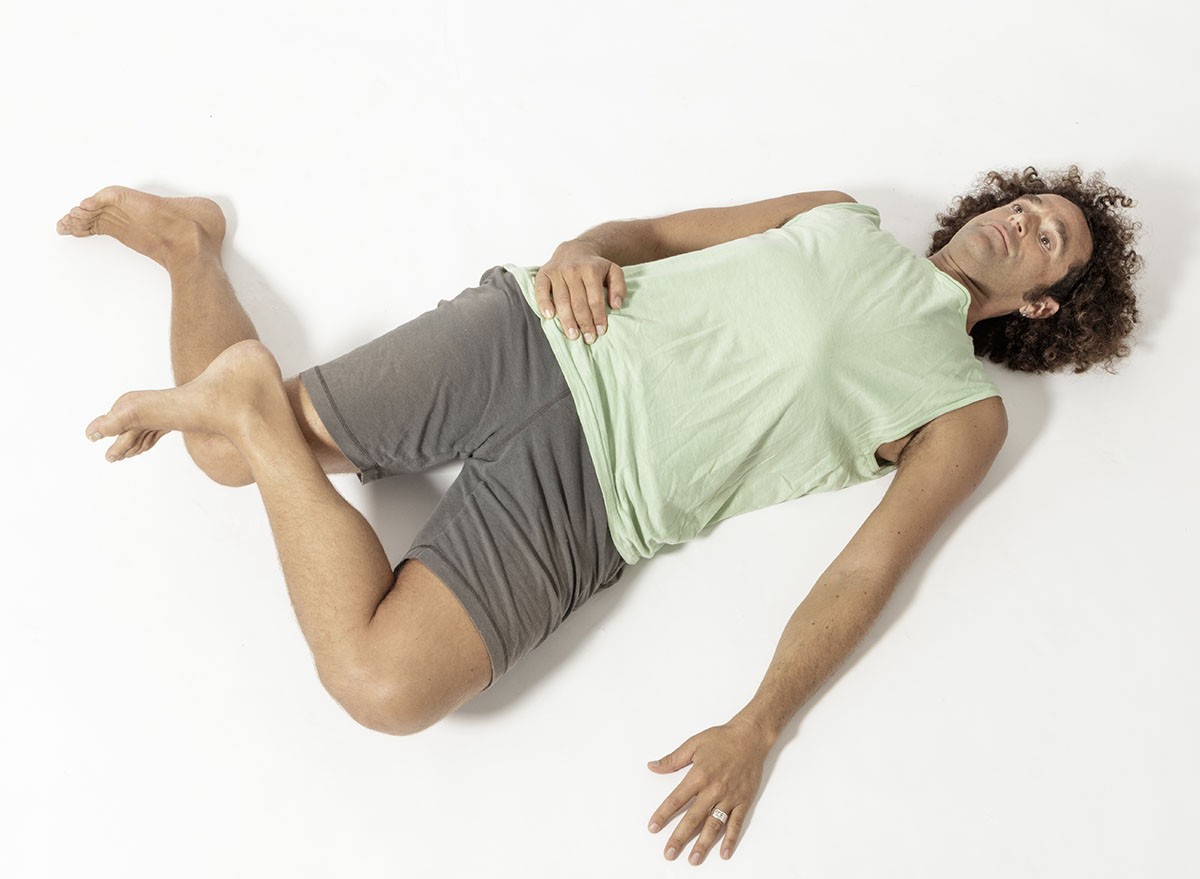
For the final stretch, position your feet wider than shoulder-width apart. "Tight hips and hamstrings contribute to back pain," explains Coach Kim. Perform gentle knee drops to each side, allowing for a deeper stretch in the hips. This variation helps release tension in both the hip flexors and lower back.
RELATED: 7 Best Back Pain Exercises Physical Therapists Actually Recommend
Making It a Daily Habit
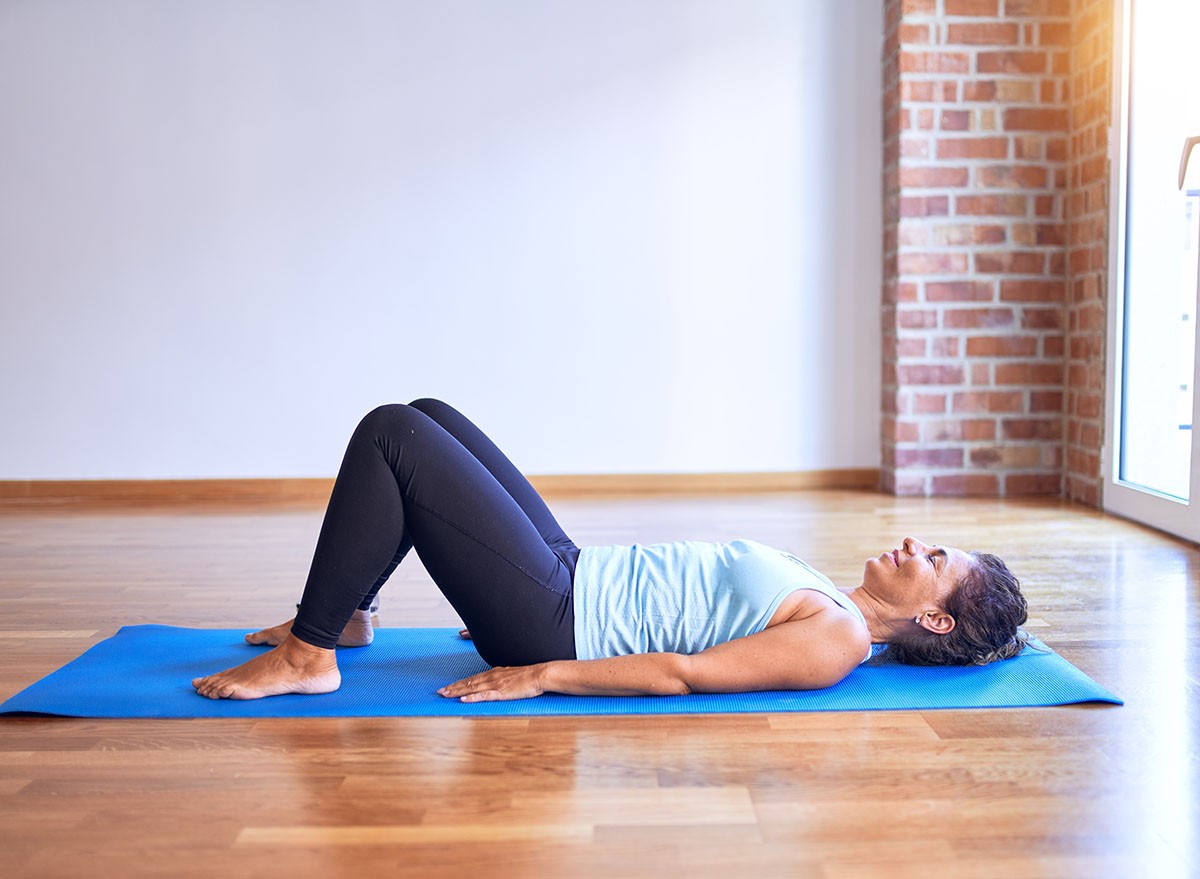
As Coach Kim emphasizes, "Prevention is key." These stretches can be performed in bed before starting your day or on a firm surface whenever needed. For optimal results, aim to complete this sequence daily, even twice a day if possible. Remember, "Movement is medicine," and consistency with these stretches can lead to significant improvements in your mobility and comfort.
Tips for Success
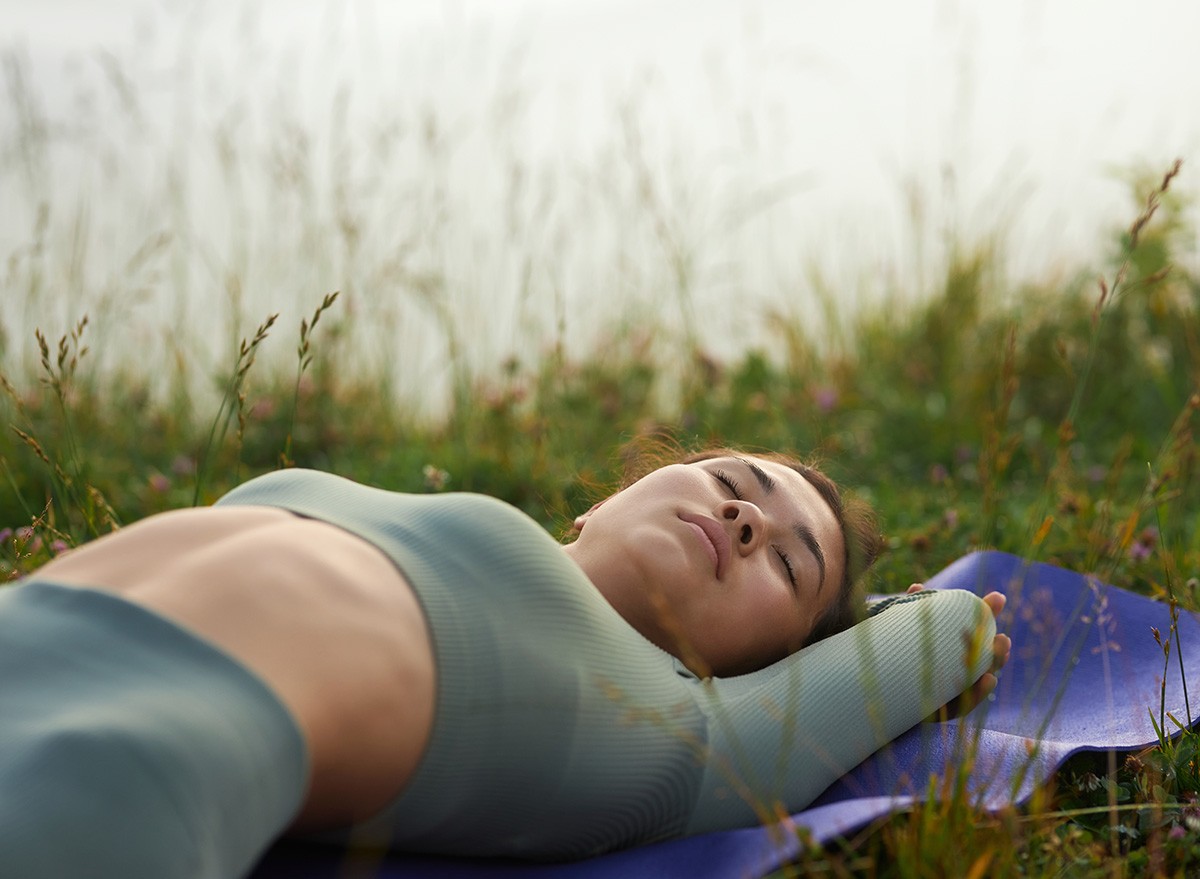
Coach Kim recommends starting slowly and listening to your body. If you experience any unusual pain or discomfort, stop and consult your healthcare provider. Remember that healing takes time, and regular practice of these stretches can contribute to long-term relief from sciatica pain.
RELATED: 12-3-30 Walking Method: 20 Proven Tips to Lose Weight Faster
The Science Behind the Stretches

According to Coach Kim, about 84% of people experience back issues at some point in their lives. These stretches target key areas that contribute to sciatic pain, including the lower back, glutes, hamstrings, and hips. By maintaining regular movement and stretching, you can help prevent future issues while managing current discomfort.
Your Path to Relief

As you incorporate these stretches into your daily routine, pay attention to how your body feels. "Ask yourself, how does your back and hips feel?" suggests Coach Kim. With consistent practice, you should notice improved mobility and reduced discomfort. Remember, these stretches are not just about immediate relief—they're about building a foundation for long-term back health and mobility. And if you enjoyed this article, don't miss these 3 Simple Stretches Made This Coach More Flexible in 2 Weeks.




